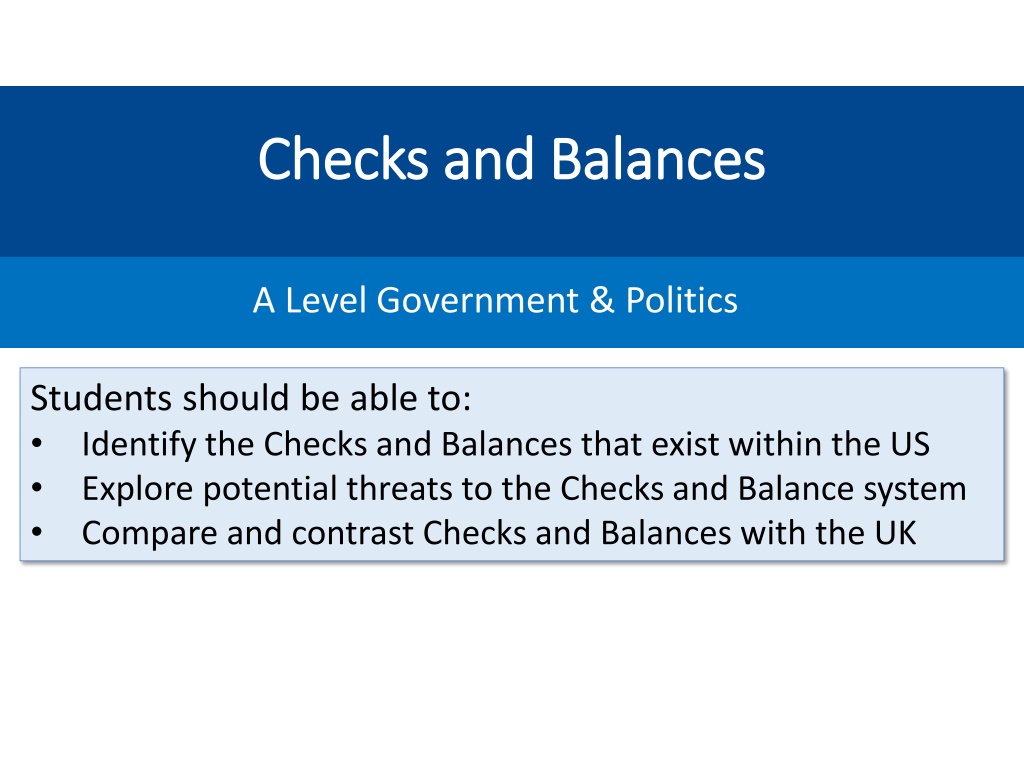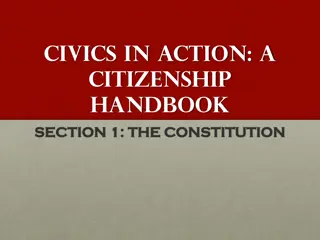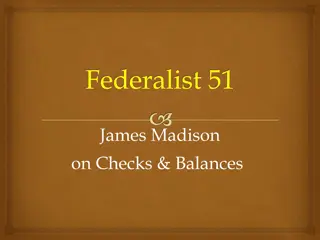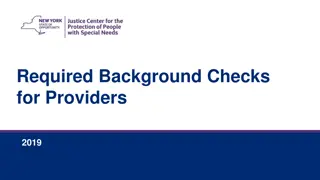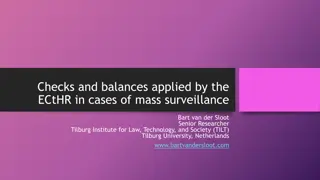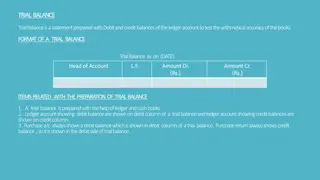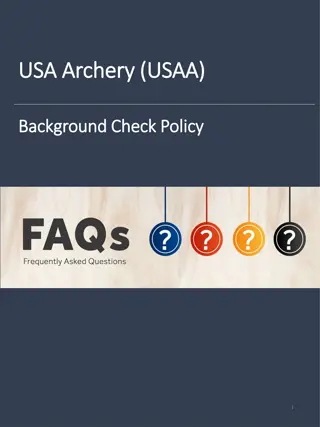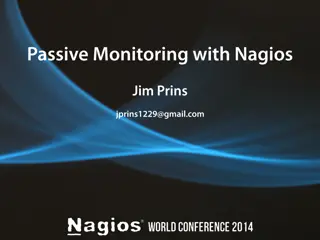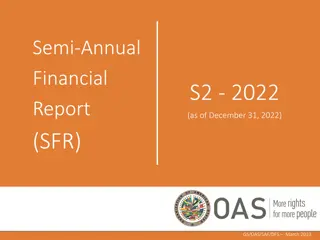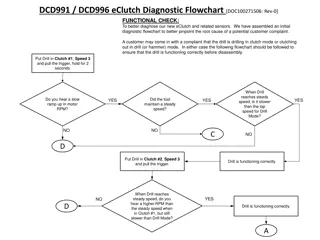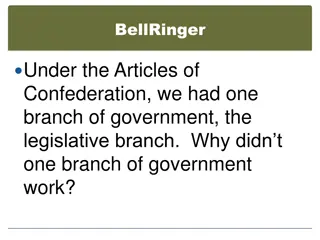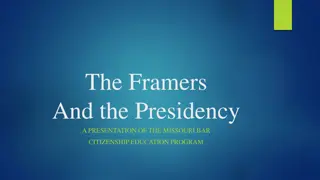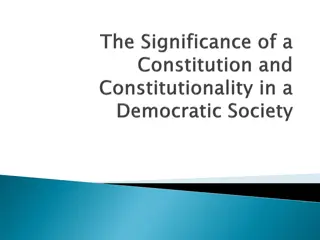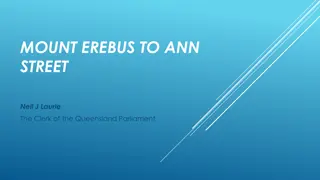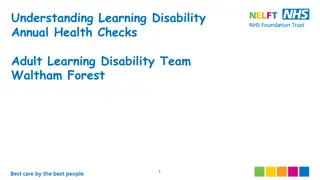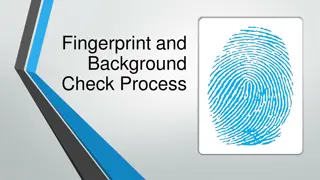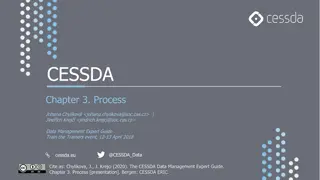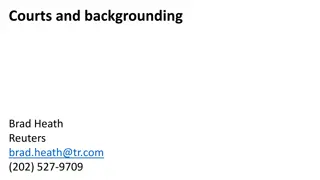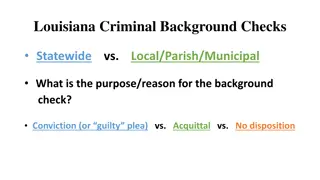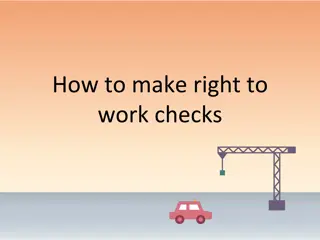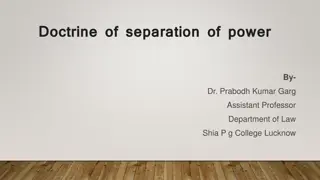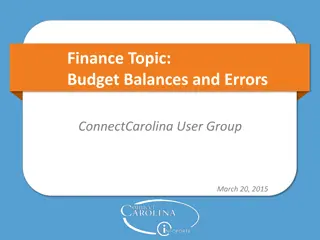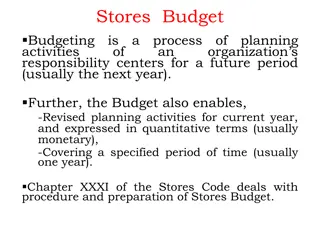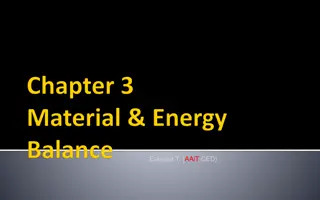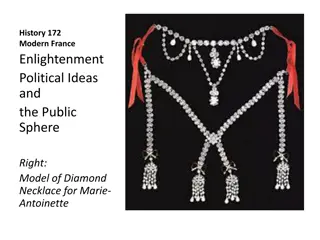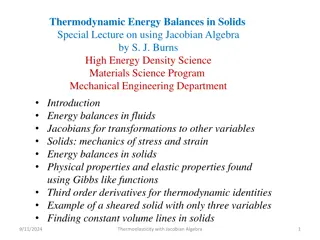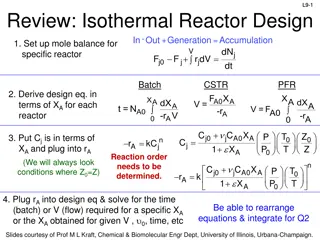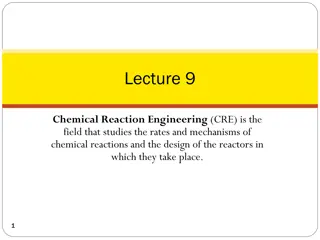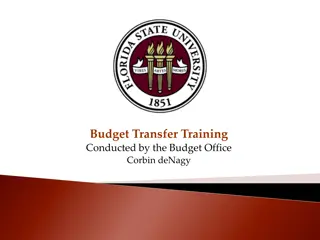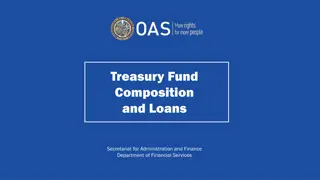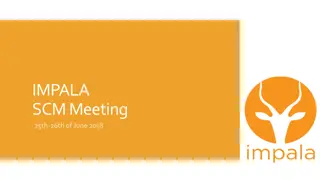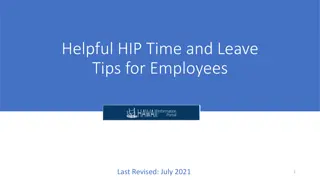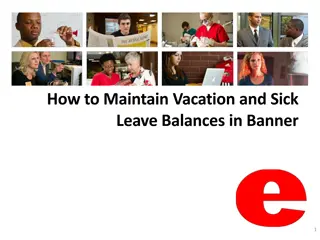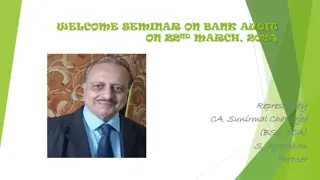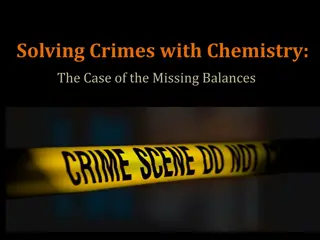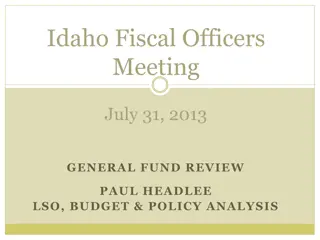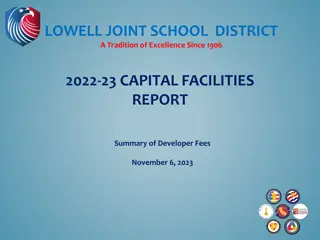Understanding Checks and Balances in the US Government
This content discusses the concept of checks and balances within the US government, exploring how each branch exercises power over the others. It highlights examples of checks on Congress, the Judiciary, and the Executive, emphasizing the role of these mechanisms in ensuring limited government and preventing abuse of power. The comparison with the UK system provides a broader perspective on governmental structures.
Download Presentation

Please find below an Image/Link to download the presentation.
The content on the website is provided AS IS for your information and personal use only. It may not be sold, licensed, or shared on other websites without obtaining consent from the author. Download presentation by click this link. If you encounter any issues during the download, it is possible that the publisher has removed the file from their server.
E N D
Presentation Transcript
Checks and Balances Checks and Balances A Level Government & Politics Students should be able to: Identify the Checks and Balances that exist within the US Explore potential threats to the Checks and Balance system Compare and contrast Checks and Balances with the UK
Checks & Balances Checks and Balances are: The theory that each branch of government exercises power and control over the others. Checks and Balances support the idea of Limited Government
Checks on Congress The power of Congress is checked by both the Executive Branch and the Judicial Branch Recommendation of legislation During the Bush administration he recommended significant Education Reform in the form of the No Child Left Behind reform programme. Executive Presidential Veto (Pocket & Official) In 2015 Obama vetoed the Keystone XL Pipeline Bill Executive Judicial Review As of 2014, the Supreme Court has struck down 176 pieces of Congressional Legislation Judicial
Checks on the Judiciary The power of the judiciary is checked by both the Executive Branch and the Legislative Branch Executive Appointments President Obama's nomination of Merrick Garland for the Supreme Court in 2016 Executive Pardon Gerald Ford pardoned Richard Nixon over the Watergate affair Executive Impeachment In 2014 the House of Representatives attempted to impeach Federal Judge Mark Fuller Congress Amend the Constitution In 1913, Congress passed an amendment to allow for the collection of a federal income tax Congress
Checks on the Executive (I) The power of the Executive is checked by both the Judicial Branch and the Legislative Branch Amend/Delay/Reject Legislation President Clinton's Healthcare reforms were derailed by Congress Congress Veto Override In 2008, Congress overrode Bush s veto of the Medicare legislation Congress Power of the Purse Congress defunded the Vietnam War Congress
Checks on the Executive (II) The power of the Executive is checked by both the Judicial Branch and the Legislative Branch War Declarations Congress has the power to declare war, and the last war declared was the Second World War. Congress Ratification of Treaties In 1996, the US Senate did not ratify the Comprehensive Test Ban Treaty Congress Confirmation of Appointments In 1986, Congress voted down Reagan s nominee for the Supreme Court: Robert Bork Congress
Checks on the Executive (III) The power of the Executive is checked by both the Judicial Branch and the Legislative Branch Congressional Committee Investigations Congress can investigate actions of the Executive such as the Benghazi Committee investigations in 2013-today Congress Impeachment In 1998, the House of Representatives instigated impeachment proceedings against Bill Clinton, but was acquitted by the Senate Congress Judicial Review In 1974 in US v Nixon, the Supreme Court ruled over breaches in the practice of Executive Privilege Supreme Court
Threats to Checks and Balances It can be argued that some practices in US Politics have taken steps to undermine the established Checks and Balances. Executive Agreements Signing Statements Executive Orders Can create law without Congress Obama has issued 226 executive orders since 2009 Makes agreements with other countries Do not require Senate ratification Written pronouncement on legislation by the President Can alter the meaning or intention of legislation passed
Comparison to the UK The US has a strong system of checks and balances, where as the UK has fewer mechanisms to ensure limited government UK US
Checks and Balances Checks and Balances A Level Government & Politics Students should be able to: Identify the Checks and Balances that exist within the US Explore potential threats to the Checks and Balance system Compare and contrast Checks and Balances with the UK
